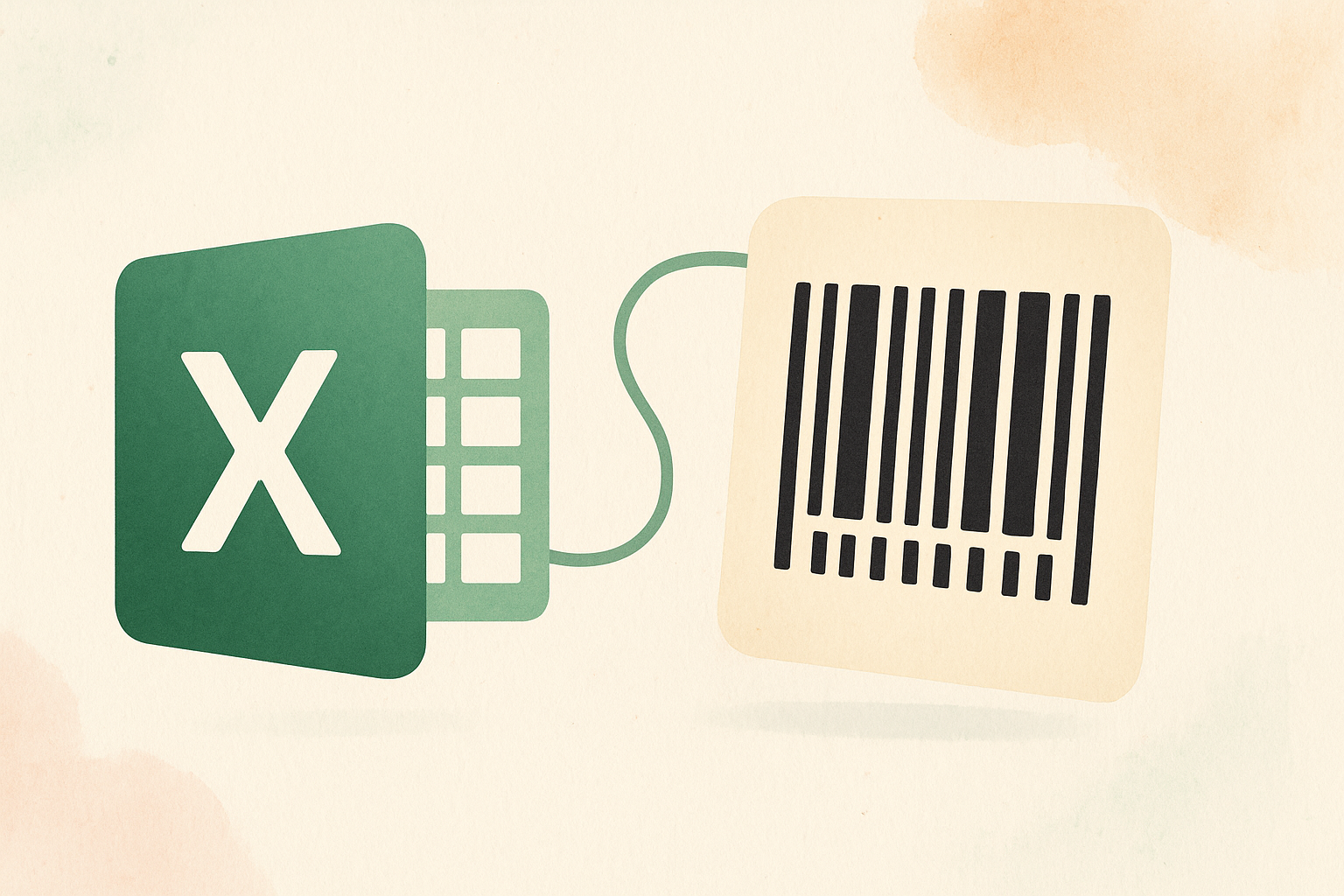
Barcodes are essential for inventory, retail, asset tracking, and many other business processes. Excel can generate barcodes without any additional plugins or add-ins by using special barcode fonts and formulas.
In this article, we will show you how to use Excel as a barcode generator without add-ins.
Method 1: Generate Real Barcodes Using a Barcode Font
This is the most reliable and professional approach. It’s fast, free, and requires no coding or add-ins.
Step 1: Download and Install a Barcode Font
- The most popular free options are ‘Free 3 of 9’ (for Code 39) and various Code 128 fonts.
- Search for “Code 128 barcode font free download” in your web browser.
- Download the zip file.
- To extract the zip file:
- Right-click >> select Extract All.
- Click OK.
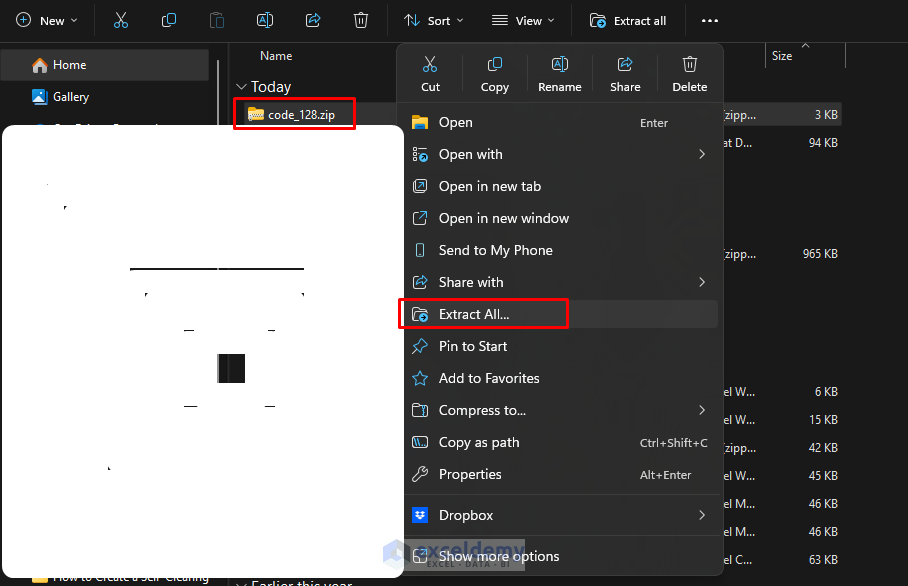
- Right-click the code128.ttf file >> click Install.
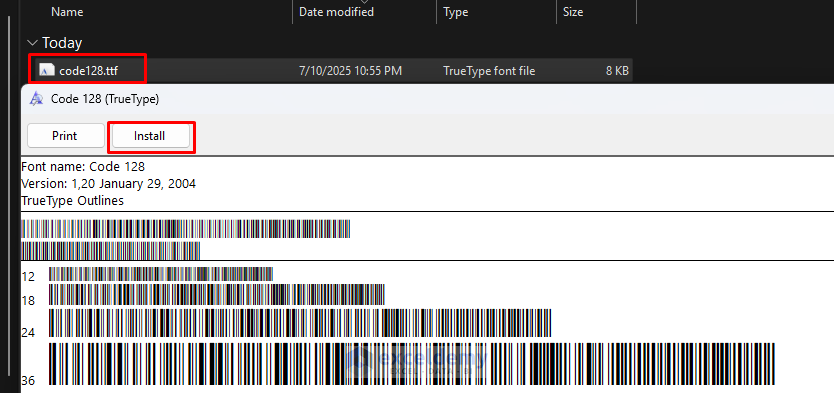
Note: You may need to restart Excel for the font to appear.
Step 2: Set Up Your Data
- Open a new Excel workbook.
- In column A, enter the data that you want to convert to barcodes.
- In column B, we’ll create the barcode representations.
Step 3: Create the Barcode Formula
Code 128 requires specific start and stop characters.
- Select cell B2 and insert the following formula.
- Drag the fill handle down to apply the formula to all rows.
=CHAR(204)&A2&CHAR(205)
- CHAR(204) is the start character.
- A2 is the data from the list.
- CHAR(205) is the stop character.
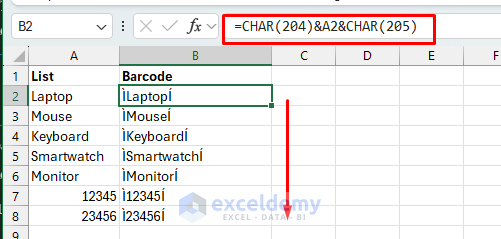
Step 4: Apply the Barcode Font
- Select the cell range (e.g., B2:B4).
- Apply the Code 128 font.
- Increase the font size (24+ works well).
- Now, the codes in column B will appear as barcodes.
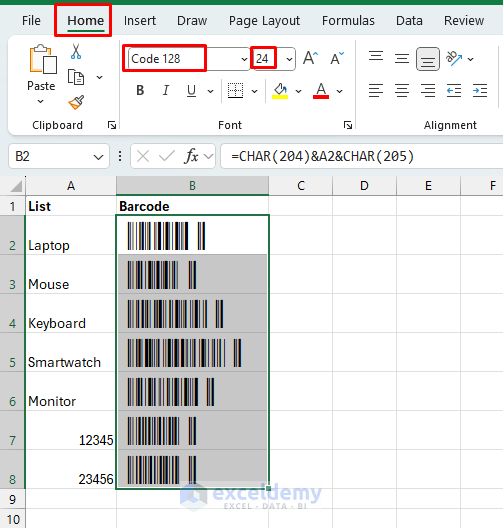
Step 5: Test the Barcode
- Print the Excel sheet or display it on your screen.
- Use a barcode scanner (or a smartphone app) to test the scanning.
- It should read the underlying product code (e.g., Laptop).
Method 2: Barcode-like Visualization Using Formulas & Conditional Formatting
Excel can’t create true barcodes with formulas alone, but you can simulate barcodes visually for demonstration or fun projects.
Binary Barcode Visualization:
This method shows a number as a black-and-white stripe pattern.
- Select cell A2 and type a number (e.g., 45).
- Select cell B2 and insert the following formula.
=DEC2BIN(A2, 8)
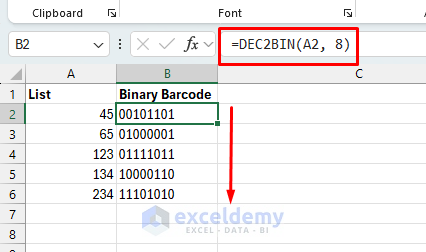
- Select cell C2 and insert the following formula.
- Drag the fill handle right to cell J2.
=MID($B2, COLUMN()-2, 1)

Apply Conditional Formatting:
- Select the cells C2:J2 (your 8 binary digits).
- Go to the Home tab >> select Conditional Formatting >> select New Rule.
- Choose Use a formula to determine which cells to format.
- Enter the following formula:
=C2="1"
- Click Format >> choose a black fill.
- Click OK.
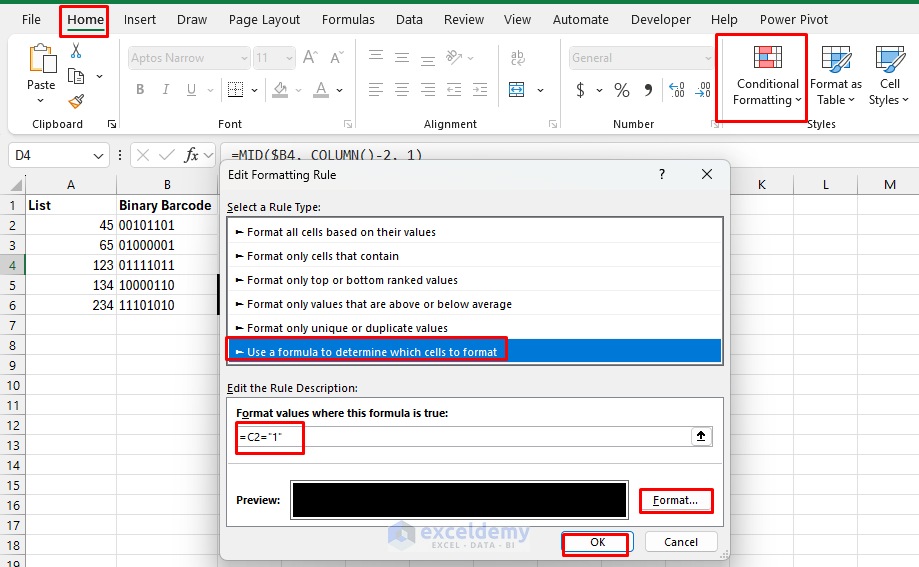
- Add another rule for white spaces.
- Enter the following formula.
=C2="0"
- Set a white fill and a white font.
- Click OK.

The range C2:J2 now shows a barcode-like visual (black = 1, white = 0).
- Adjust the cell size for a better barcode look.
- Set columns C:J to be narrow (e.g., width 0.5-1).
- Increase the row height.
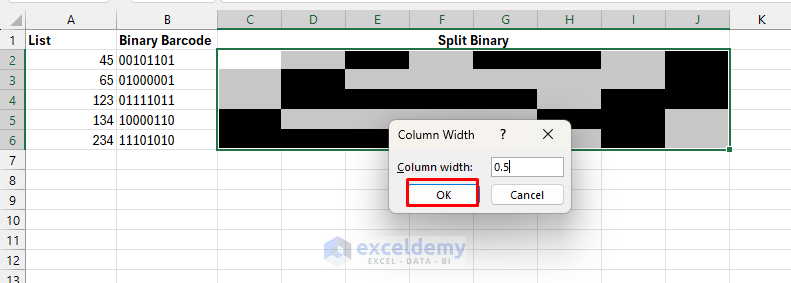
You’ll see a barcode-like pattern of black and white cells based on the binary representation.
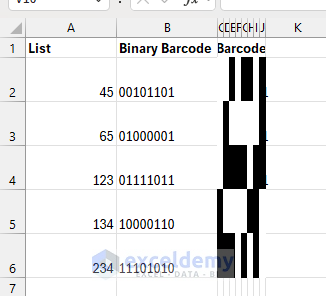
Method 3: Using the REPT Function for Bar-like Patterns
You can also simulate a barcode by repeating the pipe character.
- Insert the product code list in column A.
- Select cell B2 and insert the following formula.
=REPT("| ", LEN(A2))
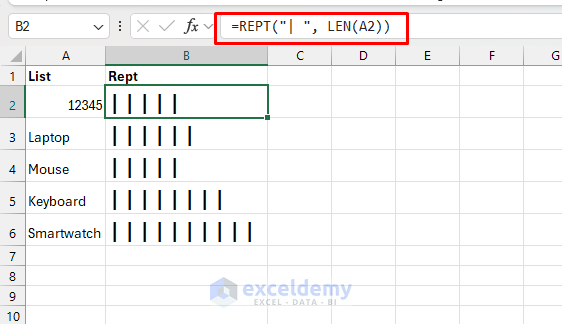
- This displays a row of vertical bars, one for each character in the cell.
Tips and Troubleshooting
- Formula not working: Make sure there are no extra spaces or special characters in your source data.
- Barcode not scanning:
- Confirm that the barcode formula includes the correct start and stop characters.
- Increase the font size. A larger, clearer barcode is easier to scan.
- Ensure the scanner is set to read Code 128.
- Character issues: Some barcode fonts might have character limitations. Ensure your data (e.g., in cell A2) contains characters supported by your specific Code 128 font.
Limitations of Formula-Based Barcodes
- Not scannable: Visualizations made with formulas, such as the REPT function or conditional formatting, cannot be read by barcode scanners.
- For illustration only: These methods are for learning, data art, or other non-critical uses.
- Professional use: Always use the barcode font method for real inventory, retail, or business tasks.
Conclusion
You don’t need any paid add-ins to generate barcodes in Excel. By installing a free barcode font and using a simple formula, you can generate scannable barcodes directly in Excel. If you’re looking for visual or educational projects, Excel’s formulas and conditional formatting can help you create ‘barcode-like’ displays. While these creative tricks aren’t suitable for scanning, they’re perfect for demos, teaching, or just for fun.
Get FREE Advanced Excel Exercises with Solutions!

